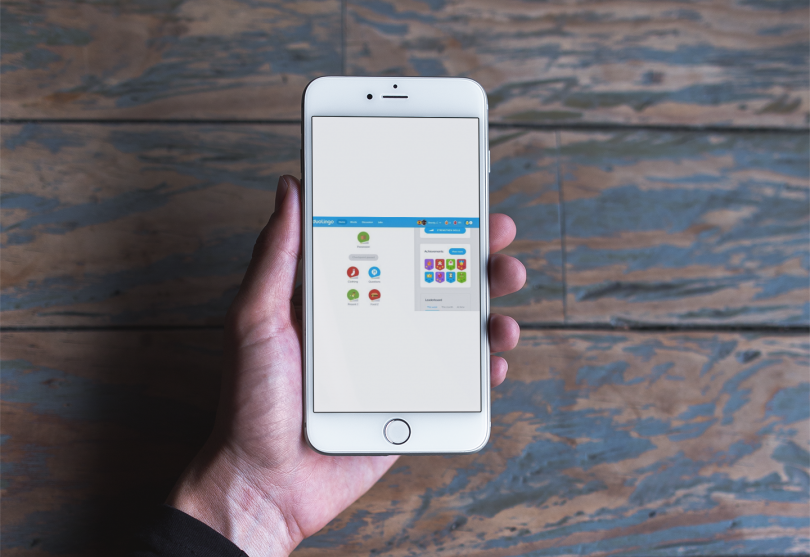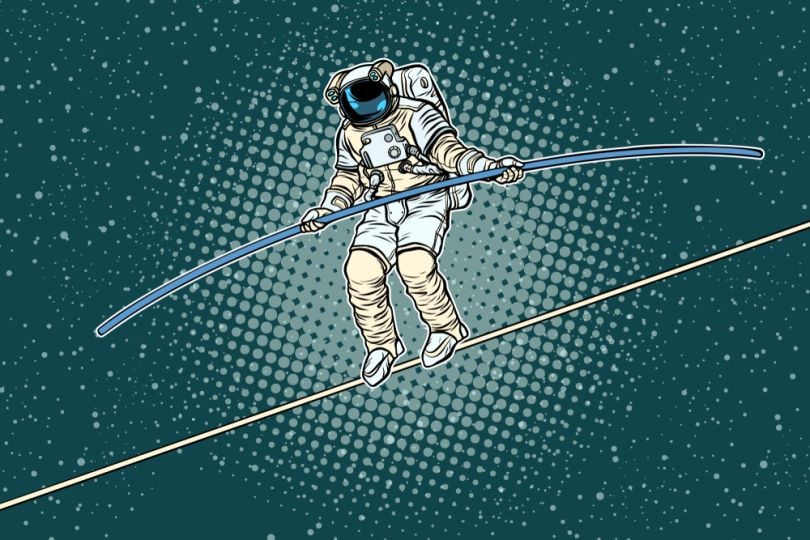Back in 2010, game designer Jesse Schell, founder and CEO of Schell Games, forecast what he termed the “gamepocalypse”: a speculative future in which nearly every aspect of daily life, from tooth brushing to bus rides, would become a game.
Now, that future has largely arrived. Whether it’s earning a free coffee drink for using the Starbucks app or scoring badges for your 10K tempo runs with Strava, gamification is embraced by consumers as a way to earn discounts and track progress toward goals — and by startups and multimillion-dollar firms as a way to engage and retain users.
But social game designer and startup coach Amy Jo Kim, who is CEO of Game Thinking Core, warns that rushing into gamification without understanding the deeper-level psychology at work is a recipe for failure. Kim says too many product developers and UX designers focus on mechanistic elements, such as badges, points and scorecards, mistaking a spike in early acquisition rates for the long-term engagement they’re hoping to achieve.
Humans, it seems, aren’t as easily conditioned as Pavlov’s dogs to salivate at the sound of the dinner bell.
In fact, several studies suggest extrinsic rewards may actually have a negative effect on intrinsic motivation. Delia O’Hara, writing for the American Psychological Association, explained the curious results of an influential 1971 study where two psychologists at the University of Rochester, Richard Ryan and Edward Deci, asked two groups of college students to play a cube puzzle called Soma. One group was paid to play; the other wasn’t. At the end of the timed session, those who were paid often quit assembling the puzzles to read magazines, while those who weren’t remained focused on the puzzles.
Humans, it seems, aren’t as easily conditioned as Pavlov’s dogs.
A curious mind might wonder whether cash functions in the same way as a notch on a progress bar or a storm of likes in your Insta feed, but research suggests extrinsic rewards, however they’re packaged, often lead to lackluster results. The Connecticut-based research firm Gartner, as reported in Fast Company, estimated that 80 percent of workplace gamification efforts fail because they don’t make gaming experiences meaningful to users.
For Kim, who has worked on blockbuster games like Rock Band, The Sims and mobile sensation Covet Fashion, the key to satisfying users is to create a compelling narrative. The best apps, she says, take users on a journey in which they conceive of themselves as the protagonist and the product as a path leading them toward greater competency and, even if vicariously, personal transformation.
“So, with Rock Band, the journey is going from playing a shitty guitar in a garage with a few friends to having really tricked out instruments, amazing amps, and an amazing outfit,” she said. “And playing on a stage in an arena for thousands of people. That’s the journey, right?”
We spoke with Kim about game thinking: a methodology she says has little to do with gamification and that has helped Slack, Disney, Tesla, Google and legions of startups develop products that create lasting customer engagement.

What’s the difference between gamification and game thinking?
The simplest way to understand it is that, for most people, gamification is a mechanics-first approach. They say, “Let’s assign points to actions, etc.,” and there are different approaches to that. Game thinking starts you with the customer journey, not the mechanics. And so it’s journey-first design versus mechanics-first design.
Gamification does work for short-term lift, which is why it fools people. “Oh my God,” they’ll say, “Look at what throwing this reward system onto our website did to our stats.” In the longer term, you don’t see that same lift. And sometimes, it even backfires.
“Duolingo didn’t start off with mechanics. Those mechanics came much later to support the core journey.”
One of the most common examples of gamification is Duolingo, but Duolingo is actually a great example of game thinking. First of all, Duolingo didn’t start off with mechanics. Those mechanics came much later to support the core journey. Duolingo started off building something very narrow for a very specific group of people. They started with superfans, and created a journey by having short, engaging activities that get harder as people’s language skills improve.
This gets into narrative and storytelling, right?
Will Wight [Maxis’ co-founder] used to say this all the time when we worked together. He’d say, “we pay attention to the story that’s unfolding in the player’s head.” In Rock Band, for example, you only see glimpses of the journey when you get done playing a song or when you level up. But that journey organizes the entire design and gives the design team guardrails for what they should and shouldn’t build. It creates a coherent mental model.
How do you build that model? Where do you begin?
Think about the journey in time increments. Think about day one, day seven, day 14, day 30, day 60. What’s going to happen? But don’t try and build the whole thing at once.
Start by building your core learning loop and refining that, but contextualize it with the journey, and then you’ll be on the path to building deep engagement. I can’t emphasize enough how important it is to have coherence at that level. It’s the thing that differentiates the quality of the Duolingo experience from the also-rans.
“People thrive when they’re first given very few choices that get them up to speed, but still feel like they have autonomy.”
People thrive when they’re first given very few choices that get them up to speed, but still feel like they have autonomy. And then, as they get better and go deeper into a system or a product, they’re ready for a wider variety of choices.
When we talk about choice architecture, it’s similar to thinking about missions or challenges. Don’t just think about giving people lots of choices. In fact, there’s been quite a bit of research indicating that, when you give people too many choices, they don’t do anything. They get decision fatigue.

In a recent piece for Medium, you discuss the concept of flow — a state of consciousness when people experience deep enjoyment and creativity. How does flow fit into the customer journey?
Fundamentally, it comes from increasing the challenge as the player’s skills grow. So let’s go back to our Duolingo example. When you go into Duolingo, you boot up the app and you say, OK, show me the next thing I want to play.
Duolingo is going to serve up just the right lesson; it knows your skill level. If you’re already speaking French but you’re rusty, you can test out of early lessons and it will take you to the right place. It does this through onboarding and some simple tests. Every time you hit the [optimal zone], you’re likely to be challenged just enough that you’re learning, but not so much that you’re like, “Oh, I can’t do that.”
What kinds of choices should you give users during onboarding?
Let’s say you’ve just started using a meditation app. It asks you, “Have you ever meditated before?” That’s a two-choice thing, and that could really help the app. Instead of asking a user to make that simple choice during onboarding, you might say “How many hours have you meditated in total in your life?” And the person is sitting there looking at it going, hmm, I don’t know. And then they close the app.
“Let’s say you’ve just started using a meditation app. It asks you, ‘Have you ever meditated before?’ That’s a two-choice thing, and that could really help the app.”
Later, the choices can increase. Let’s say someone's been using the app for a month and some new meditations get released. Maybe then you say, “Hey, there’s five new meditations this month. Check them out and pick the one you want to listen to.” At that point, seeing five choices probably isn’t overwhelming. They’ve already tried some, they have a feeling for which meditation voices they like the best. And, at that point, being given more choices makes sense.
Which aspects of game thinking should product managers and UX designers prioritize?
Game thinking crystallizes aspects of game design into three core ideas. The first is superfans. The idea that you don’t just empathize with your customers, you empathize with your high-needs superfans first. Then later, as you get closer to shipping something, you reach out and empathize more with your average customers. And so, just as game design requires thinking over time, creating an app requires thinking about who you test your ideas with over time. The second core idea is the mastery path, the idea of a customer journey toward greater skill and better understanding. The third element is the core learning loop, the habit-building aspects of the design.

Do any companies integrate these ideas especially well?
Slack, if you analyze it through the game thinking lens, follows the mastery path: discovery, onboarding, habit building and mastery. It has an incredible path that’s very natural and uses no game mechanics or gamification. It doesn’t look anything like a game, but the method of discovery is very social. People pull other people in. Onboarding is a one-on-one conversation with a helpful bot. That prepares you for the multiplayer experience, which is the core of Slack.
Console games use this technique of teaching you the ropes by interacting with a bot. And then you know enough that when you go into the multiplayer environment, you’re not an idiot — you have a baseline understanding.
The habit-building aspect of Slack comes from whether you have read all your messages. You know, are there any unread messages or updates I need to read? That’s very similar to habit building in most social media: Twitter, Instagram, etc.
“Slack, if you analyze it through the game thinking lens, follows the mastery path: discovery, onboarding, habit building and mastery.”
What Slack also does is let you customize the experience, and that’s really the through line. Once you start using Slack, you customize your notifications so you get the ones you want. You can customize the colors, you can customize which emoji are used. You can just keep going deeper with customization. And if you keep going, you’re into mastery. The deeper you go, the more opens up to you. And that’s the essence. But does it look like a game? No.




